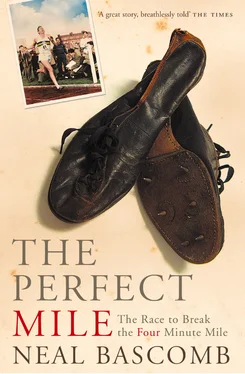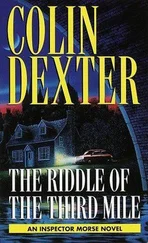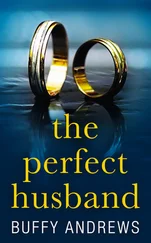‘Bannister is fading!’ Abrahams called into the microphone.
Lueg held strong, stretching his lead by three yards at the end of the turn. Barthel then struck, delivering the finish Bannister wanted for his own. The Luxemburger cruised past Lueg in the final fifty metres with McMillen also coming up fast.
‘And it’s Barthel wins. Second, the American. Third, Lueg. Fourth, Bannister. Time, 3:45.2.’
It was a new Olympic record, and the surprise upset of the Games. Bannister was so exhausted by the end of the race that he had to hold on to the back of Lueg’s singlet to keep from pitching to the track. He hadn’t even claimed a bronze. The British team was distraught. Columnists began to sharpen their pencils. This was a betrayal of trust.
Barthel was handed roses, and then he rested on a bench to take off his shoes. The New Yorker ’s A. J. Liebling observed, ‘He had had no trainer and no compatriot with him when he came into the stadium, and he was still alone. It must have been a great solace to him on the night before the race, knowing he had nobody to disappoint.’ How different it was for Bannister who, full of emotion, later watched Barthel mount the victory dais and weep tears of joy while Luxembourg’s anthem played throughout the stadium. For Bannister, the Helsinki final was a disaster. He told his friend Brasher years later, ‘A disaster is something which is shared between you and the public which expects something of you and which you cannot or have not fulfilled.’
As he headed back to the Olympic Village later that afternoon, fending off the press who were preparing to excoriate him for his insufficient preparations, Bannister needed to find a way to overcome what had happened. He couldn’t go out a loser. His answer would be to attempt a challenge that had been in the making for a very long time: the four-minute mile. And he would not be alone in the effort.
5
The man who has made the mile record is W. G. George … His time was 4 minutes 12.75 seconds, and the probability is that this record will never be beaten.
Harry Andrews, 1903
To the furthest limit he searches out.
Job 28:3
Before stopwatches, cinder tracks, and perfect records, man ran for the purest of reasons: to survive. The saying goes that ‘Every morning in Africa, an antelope wakes up. It knows it must outrun the fastest lion, or it will be killed. Every morning in Africa, a lion wakes up. It knows it must run faster than the fastest antelope, or it will starve. It doesn’t matter whether you’re a lion or an antelope – when the sun comes up, you’d better be running.’ There are few instincts more natural than the body in full motion as it races across a field or through the trees. From the beginning, we were all made to run. In days past, when ‘survival of the fittest’ meant exactly that, the only measure of the race was whether the hunted reached safety before being overtaken. Seconds and tenths of seconds had no meaning.
Sport evolved from this competition to survive. In ancient Egypt, newly chosen kings went on a ceremonial run, as historian Edward Sears wrote, that ‘symbolized laying claim to his domain and proved that he was fit enough for the demands of his position’. Thirty years after the king’s coronation, and every three years thereafter, he was challenged to run the same long distance he had as a young man. If he failed, he lost his power to rule. Other early societies proved status through skills such as hitting targets with a bow and arrow, lifting heavy rocks, or jumping across streams; but the ability to run faster and further than others remained a dominant standard.
It was fitting that the first event in civilisation’s earliest and greatest celebration of sport, the Olympic Games in 776 BC, was a foot race. A Greek citizen named Coroebus sprinted 200 yards across a meadow alongside the river Alpheus and was crowned winner with a garland made from the leaves and twigs of an olive tree. Sporting ability was integral to Greek life, and its people were the first to promote what would later be phrased mens sana in corpore sano – the sound mind in a sound body. Ancient Olympic champions were treated like gods, worthy of worship and great odes. The athletes ran their races naked and barefoot, and as the years passed they instituted ten-month training regimes and began to specialise in certain distances. Longer races involved running from one end of the stadium to the other and back, the distances varying from stadium to stadium. Success was recorded by how many victories an athlete had claimed over his fellows, not by their times (crudely measured, in those days, by sundial or water clock).
The Romans favoured gladiator contests over athletics, but they made two important contributions to the story of the four-minute mile: first, they were devoted to statistics and detailed the results of their sporting heroes (namely chariot racers); second, they were the first to come up with the distance of the mile. Roman soldiers calculated their long marches in mille passus ( mille, one thousand; passus, a two-step stride). Given that each stride was roughly two feet and five inches – shorter than average because the soldiers carried over fifty pounds of provisions and weapons – the earliest mile translated to roughly 1,611 yards.
In sixteenth-century England, footmen, who travelled long distances by the sides of heavy coaches, steering their masters away from dangerous spots in the road, were the first to race, often at the bidding of their masters. They used the mile-posts, first installed by the ruling Romans, as starting and finishing lines. This tradition developed throughout the seventeenth and eighteenth centuries into village festival ‘freak runs’, where the competitors ran on stilts or while carrying a load of fish. Endurance contests, whether walking or running, were also popular.
By the nineteenth century, ‘pedestrians’, as the English runners were known, were running on the roads for cash. Events were often organised by local pubs in order to draw a crowd. Since the mile race was a favourite, it paid to specialise in that distance. The idea of competing for a mile record instead of simply against one’s opponent in a particular race evolved gradually from the standardisation of the mile at 1,760 yards, advances in timekeeping, and an early industrial society’s passion for quantifying everything in sight. It so happened that a grass track divided into quarter-miles fitted nicely on to a cricket ground or football field, and it was much safer racing there than on increasingly busy roads. Technology, progress, and coincidence had played its part. Now all the mile race needed was a few fast souls.
Running a mile in less than five minutes was considered the breaking point until Scottish landowner Captain Robert Barclay came along. Famous for his cheerful disposition, predilection for lifting heavy objects, and for walking a thousand miles in a thousand hours, Barclay won 500 guineas by posting a 4:50 mile in 1804. Then, in 1825, James Metcalf, ‘a tailor by trade, but a pedestrian by profession’ who trained by chasing hounds, beat Barclay’s time by a margin of twenty seconds. Over the next sixty years, various milers chipped away at the record, second by painful second, the best runners earning championship belts for their efforts. Over time, the stakes wagered rose into the thousands of pounds.
For most of the nineteenth century, the ‘gentleman amateur’ was absent from this scene. This British public school ideal, favoured by the universities of Oxford and Cambridge, was indeed a noble thought, but the runners guided by subscribing to its strict rules were no match for the best of the professionals. That was until chemistry apprentice Walter George began training seriously and reduced his mile time to 4:18.8 in 1884. As this was just two seconds shy of the record held for the previous eight years by the professional William Cummings, a showdown between the two was inevitable.
Читать дальше












